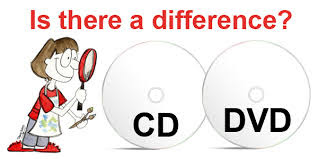DVD
Short for Digital Versatile Disc or Digital Video Disc, a DVD or DVD-ROM, is a disc capable of storing large amounts of data on one disc the size of a standard Compact Disc. DVD drives were first sold in 1997, today they are widely used for storing and viewing movies and other data. To play a DVD on a computer a user must have a DVD drive as well as a DVD player, which is a software program designed to play and control a DVD disc. The movie Twister became the first feature film put on DVD on March 25, 1996.
How much data can a DVD hold? There are several capacities a single DVD disc is capable of holding. Below is a listing of the different types of DVD’s and each of their total capacity.
One of the most common DVD’s is the single-sided, single-layer disc, capable of holding 4.7 GB.
The single-sided, double-layer disc is capable of holding between 8.5-8.7 GB.
The double-sided, single-layer disc is capable of holding 9.4 GB.
Although rare, the double-sided, double-layer disc is capable of holding up to 17.08 GB.
What is the difference between a DVD and a CD?
Physically, a DVD and CD look the same. Both discs are the same size and typically have one side with a label and the other side that the laser reads, unless it is a double-sided DVD. However, the technology that makes up a DVD allows for the same size disc to hold a lot more data than a CD.
The future of DVD
DVD’s are still very popular and widely used. However, more recent technologies like Blu-ray discs and streaming services like Netflix and other cloud services DVD sales and usage have been on a steep decline.
